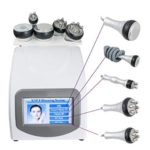Fat cavitation is a non-invasive body contouring treatment that has become increasingly popular among people looking to reduce fat and cellulite in areas like the arms, abdomen, and legs. It is a relatively new procedure that uses low-frequency ultrasound waves to break down fat cells, which are then naturally eliminated from the body. In this article, we will explore what fat cavitation is, its benefits, and the risks associated with the procedure.
Fat Cavitation is a non-surgical method to reduce fat by using low-frequency sound waves. This procedure is performed by a trained professional and involves the use of a special device which emits the sound waves to break down fat cells. Fat Cavitation is a painless and non-invasive way to reduce body fat and help sculpt the body. Results are typically seen after a few treatments and can last up to six months.

Contents
What is Fat Cavitation?
Fat cavitation is a relatively new, non-surgical cosmetic procedure used to reduce body fat and cellulite. The procedure is also referred to as ultrasonic liposuction, ultrasonic cavitation, or simply “cavitation.” It uses low-frequency sound waves to break down fat cells, which are then naturally eliminated by the body. The procedure is generally considered safe and is said to be painless, although some people have reported mild discomfort.
Fat cavitation is becoming increasingly popular as an alternative to surgical fat reduction procedures, such as liposuction. Unlike liposuction, fat cavitation does not require any incisions or anesthesia and is generally considered to be much less invasive. Additionally, it is said to be more affordable than liposuction and other surgical fat reduction procedures.
How Does Fat Cavitation Work?
Fat cavitation is a non-invasive procedure that works by using a device that emits low-frequency sound waves. These sound waves are directed at the areas of the body where fat deposits are present. The sound waves create vibrations that cause the fat cells to break down into liquid, which is then naturally removed from the body through the lymphatic system.
The procedure is typically done in a series of treatments, with each session lasting about 30 minutes. It is said to be painless, although some people have reported mild discomfort. Additionally, the results of the procedure are not immediate and may take up to several weeks to be seen.
Benefits of Fat Cavitation
Fat cavitation is an increasingly popular procedure due to its relatively low cost, minimal invasiveness, and minimal risk of side effects. The procedure is said to be painless and can be done in a short amount of time. Additionally, the results of the procedure are said to be long-lasting, with some people reporting that the effects can last up to two years.
Furthermore, fat cavitation is said to be effective for reducing fat and cellulite, as well as improving the appearance of the skin. It can be used to target areas of stubborn fat, such as the abdomen, back, and buttocks.
Risks Associated with Fat Cavitation
Although fat cavitation is generally considered to be safe, there are some potential risks associated with the procedure. These include skin irritation, swelling, bruising, and numbness. Additionally, there is a risk of infection and scarring, although these risks are considered to be rare.
Who Should Not Have Fat Cavitation?
Fat cavitation is not suitable for everyone. People with certain medical conditions, such as heart problems, should not have the procedure. Additionally, people who are pregnant, breastfeeding, or taking certain medications should avoid the procedure.
Is Fat Cavitation Right for Me?
If you are considering fat cavitation, it is important to speak with a qualified health care professional to determine if the procedure is right for you. They can evaluate your medical history and discuss the potential risks and benefits of the procedure.
Top 6 Frequently Asked Questions
What is Fat Cavitation?
Fat cavitation is a non-invasive aesthetic procedure used to reduce fat deposits and contour the body. It makes use of low frequency ultrasound waves to break down fat cells, which are then naturally eliminated from the body.
How does Fat Cavitation Work?
Fat cavitation works by targeting stubborn fat deposits with low frequency ultrasound waves. The waves penetrate the skin and disrupt the fat cells, causing them to break down and release their contents. The broken down fat is then metabolized and eliminated from the body naturally.
What Areas Can Be Treated With Fat Cavitation?
Fat cavitation can be used to target fat deposits on the abdomen, thighs, hips, buttocks, arms, and chin. It is most effective for those who have localized areas of fat that cannot be removed by diet and exercise alone.
Is Fat Cavitation Safe?
Fat cavitation is a safe and non-invasive procedure. The low frequency ultrasound waves used are gentle and do not cause any damage to the surrounding tissue. The procedure is also virtually painless and does not require any anesthetic.
How Long Does a Fat Cavitation Treatment Take?
A fat cavitation treatment typically takes about 30 minutes to complete. Depending on the area being treated, multiple sessions may be needed to achieve the desired results.
What Results Can Be Expected From Fat Cavitation?
Results from fat cavitation can be seen in as little as a few days. Patients can expect to see a noticeable reduction in fat deposits and an improved contour of the body. The results can last up to 6 months, depending on the patient’s lifestyle.
How Ultrasonic Cavitation Works
Fat cavitation is a revolutionary non-surgical medical procedure that uses low-frequency ultrasound to break down fat cells in the body. It is a safe, effective, and painless way to lose fat without the need for surgery or invasive treatments. The results of fat cavitation are immediately visible and can last for up to 6 months. With no downtime and minimal risk, fat cavitation is an ideal option for those looking to reduce fat and improve their overall body contours.








